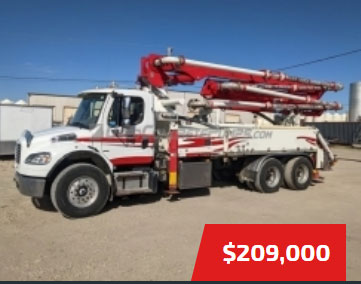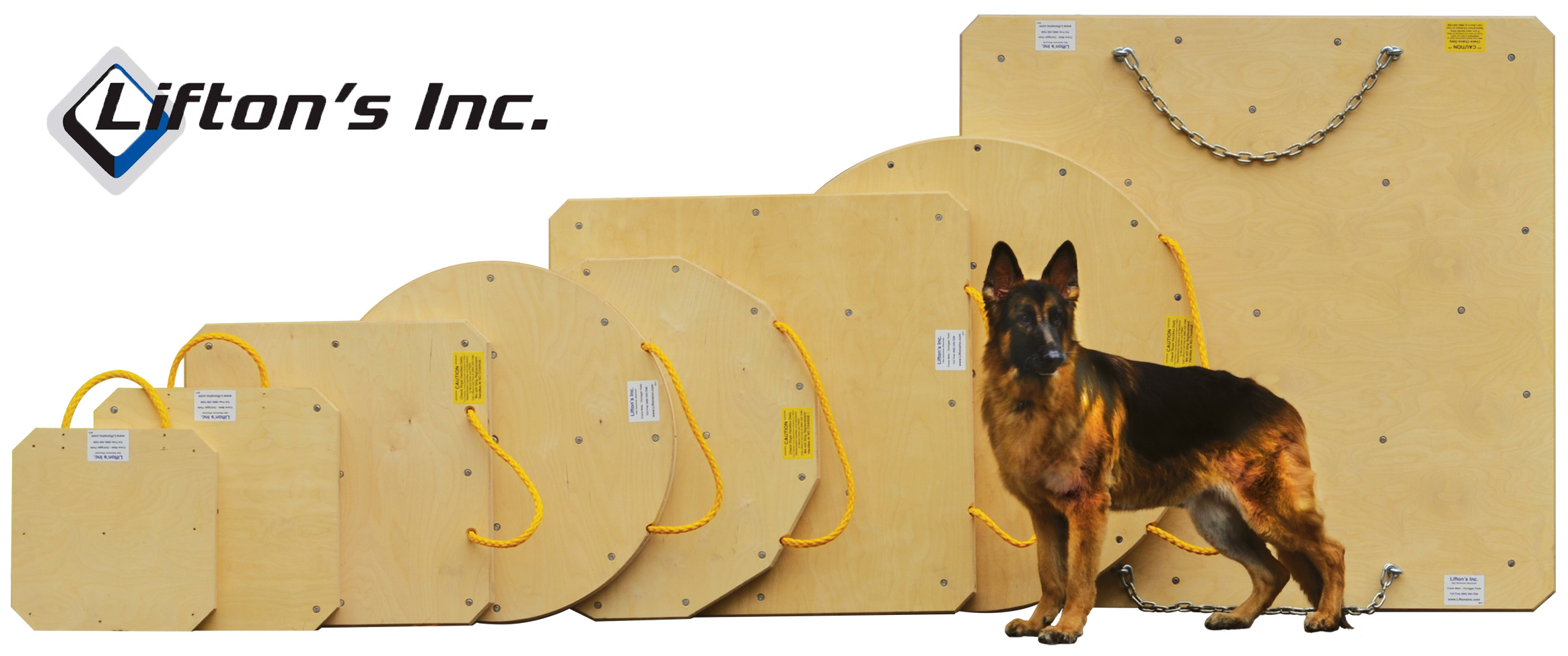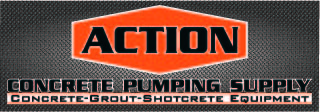| Todd | 07-19-2010 | comment profile send pm notify |
|
Attached is a press release from the Concrete Pump Manufacturers Association (CPMA) regarding warnings available from the CPMA that address the release of trapped air while pumping. Please help us reduce jobsite injuries by disseminating this information as described in the press release. The path on the CPMA website to the labels mentioned in the press release is: http://www.cpmass.org/PRESSRELEASES.php If you have any questions, don't hesitate to contact me. For the Concrete Pump Manufacturers Association— |
||
| Todd | 07-19-2010 | reply profile send pm notify |
|
If you just want to download the Press Release here is the download. http://www.cpmass.org/files/53_PressReleaseAirDecals.pdf
|
||
| Todd | 07-19-2010 | reply profile send pm notify |
|
Very good job guys. The CPMA is first class. |
||
| Many | 07-19-2010 | reply profile send pm notify |
|
At least a thought in the right direction,now my pet piev. The senerio,operator on say 9th floor.Enter .... b. Activate the pump’s emergency stop if you can’t get the operator’s attention. Now we have a driver that can't tie his own shoes,not a soul on the ground understands the screaming from the 9th.Ahhh,the life of big boom operators.Who gets to climb down and reset? CMPA,you missed the boat |
||
| Deaner | 07-19-2010 | reply profile send pm notify |
|
i had that exact experiance a few years ago many. i was pouring walls on the 7th floor of a high rise on the side opposite from the pump. the concrete stopped flowing and i thought i could get away with pumping it in reverse one stroke and then forward once or twice see if that would get her flowing... nope. ok bust open the hose and reducers... nothing.. uh oh.. must be plugged in the boom somewhere... i walked to the other side of the floor and discovered that one of my pipe elbows had come out of the clamp and concrete had been pouring down the side of the building, covering the balconies below with concrete. no one was hurt (thank God) and nothing was damaged. when i talked to the mixer operator who had a full and complete view of what was happening and asked him why he didn't hit the stop button he said "well i didn't want you to have to come all the way down here to reset it" ... yeah i'll just shimmy down the boom and fix that elbow from up there... he was to his credit honking the horn furiously trying to get my attention.. the horn switch being located right beside the stop switch... |
||
| Vasa | 07-19-2010 | reply profile send pm notify |
|
100% right Many ! But it is good for Me to take the stair . We try as hard We can to teach the RM-mixers what to do but it is probably easier to move Himalayas.....
But We also try to teach a new operator to detect air in the system , watch the endhose when the rock or S-tube change if the mud is still comming (in a steady flow), have a foot on the line and "feel" the flow (if it's possible to stand on the line) , try to stand so You can see the RM when he is empty .
But some operators never learn to detect the symptom of air in the line...
Now I going to get My as kicked by both pump-operators and RM drivers... |
||
| Many | 07-19-2010 | reply profile send pm notify |
|
And try to explain to the crew what happend as the boom drains and raises,splttering mud. That would be a great time to ask for volenteers for the stair run. |
||
| schwing58 | 07-20-2010 | reply profile send pm notify |
|
Sorry CPMA but this thing makes my blood boil!! Hitting the E-stop is in these cases the WORST thing that can be done. It leaves the operator powerless. No action can be taken in the first seconds the E stop is used, like hitting the pump in reverse to take away the pressure. So this sticker would only make things worse. A good operator stops his pump when the RM driver sounds his horn. Specialy if he does it 'furiously' (sorry deaner but you can't blame the RM driver for your fuck up) The picture is nice but I will surely take a knife and cut of that stupid text. Maybe you should talk to real operators before you put something on the marked. |
||
| Mr. Ed | 07-20-2010 | reply profile send pm notify |
|
I was a pump operator, and I know the frustration of which you speak, but here's the thing: The number one cause of injury in the pumping industry is the hose-person getting whapped in a hose-whipping incident. A ready-mix driver has direct control of one of the causes of hose-whipping: sucking air into the hopper. To NOT tell him that he could injure or kill the hose person because of his actions is NOT acceptable.
I agree they should signal the operator as the first choice, and that's what the sticker says. But if the horn is missing, or broken, or the operator is just not paying attention, then what? Just pump the air up to the end hose? No. Hitting e-stop if he can't get your attention is the right move. This is too deadly to ignore. If you haven't killed anybody with a hose whip yet, then great, but too many people have been injured and killed to pretend that an operator's inconvenience is more important. Making the ready mix driver aware is the first step.
Making sure your horns are working is a good second step. |
||
| schwing58 | 07-20-2010 | reply profile send pm notify |
|
Sorry mr ed. I see your point but I don't agree. When the mix driver is first trying to get your atention by sounding horn and you don't react than the air could already be close to the endhose by the time he pushes the E stop. When pumping with a thin hose the operator can recognise the air is coming and hit reverse or maybe shut his airclamb or something like that to reduce the hose whip. By pushing the E stop you'll make sure the air will, in that case, come out a MAX pressure. |
||
| Mr. Ed | 07-20-2010 | reply profile send pm notify |
|
Sorry, Schwing 58, but informing the ready mix driver that he has a deadly hazard under his control and telling him to inform you if he sees the hazard entering the system and stop the pump if he can't get your attention is still the correct move. ACPA and CPMA NEVER make rules because we had nothing to do on a Tuesday. That set of labels, and, for that matter, every label on the machine, is there because people were seriously injured or killed. In the case of hose-whipping, it's an epidemic. Talk to your ready mix drivers. Teach them how to notify you. Nobody WANTS them to hit e-stop, it's the last resort. This is a short-time inconvenience for operators while drivers learn what they should do, but the next hose-whip can be the last day of somebody's life. The same press release and labels were sent to the NRMCA (National Ready Mixed Concrete Association) and the ASCC (American Society of Concrete Contractors) so they can begin education from their side. The possible inconvenience to operators will go away when the education is accomplished. If it happened on my job that a guy was killed because the air made it to the end, I would pay any price to get that day back and try a different way. As with any safety steps, if nobody died today, then the safety stuff was just inconvenient (What good is a seatbelt if you're not in an accident?). But what if you're the father of the hose-person tomorrow... |
||
| schwing58 | 07-20-2010 | reply profile send pm notify |
|
I don't think you read my story propperly. I'm not talking about inconvenience. But I get what you mean. Only important to learn the mix drivers how to act. Not just hitting that e stop at the wrong moment. (read: when the air is almost at the end of the system) And that's not gona be easy.. Just a sticker is not gona do that. Untill then i'm not sure if I want them to be playing with my e stop. Some drivers here hardly know how to back the truck to the pump. I actually had to pull one out of his truck once and backed up the mixer myself!! |
||
| Many | 07-20-2010 | reply profile send pm notify |
|
It's very simple to do,well if i'm not with the cpma.Do just like the fools did with the remote boxs,didn't agree there either. Take the e-stop and remove the locking capabilities.E-stop is tripped,operator can reset off remote and away we go.Now the bill for this simple thinking is $5k,as Mr T would say. Pay up fool |
||
| murf | 07-20-2010 | reply profile send pm notify |
|
On a pumi(truck mixer/pump) you have level probes in the hopper to activate the drum when the hopper level is below a certain point,using these same probes its possible to shut the pump off automatically as well . The risk factor of trying to educate a mixer driver is therefore reduced. Empty hoppers are just one of a number of reasons why/ how air can enter the system. |
||
| Many | 07-20-2010 | reply profile send pm notify |
|
another thought,cut the volums of these machines to 150 max.Perhaps drivers could keep up. |
||
| Deaner | 07-20-2010 | reply profile send pm notify |
|
A good operator stops his pump when the RM driver sounds his horn. Specialy if he does it 'furiously' (sorry deaner but you can't blame the RM driver for your fuck up) Schwing58: you are absolutely right, a good operator does shut his pump off when he hears the horn, unfortunately when you are standing on the far side of the 7th floor of a highrise with other equipment running near you and earplugs in you simply cant hear the horn honking. secondly the point of the story was not to "blame" the mixer driver for what was obviously an issue that i should have addressed before it got to that point. i had pointed out that issue to maintenance (that the flange of the pipe elbow was wearing through the side of the clamp) and was told not to worry about it because the pump was only a rental (shipped to us the week before in that condition by one of this site's sponsors i might add.) Unfortunately my inexperiance coupled with the intimidation of being a newer operator led me to make the wrong decision. i accept my responsiblity for what happened and believe me in my new position as senior operator at a different outfit i will not allow my equipment to leave the yard if i discover an issue that could possibly lead to a similar outcome. besides even if he had hit the E-stop at the exact moment that the clamp failed some concrete would still have poured out. so i guess the point of the story (other than to poke fun at the stereo-typical dumb truck driver) was to highlight and reinforcethe need for mixer operators to be educated on when and how to use the e-stop properly. i mean come on put yourself in his place: if you saw concrete pouring out of a pipe and down the side of a building would you honk the horn and simply keep honking and honking and honking even after it becomes painfully obvious that the pump isn't shutting off? or would you hit the stop button to make sure that the pump cannot be activated until you know that the operator understands what the problem is. on the subject of using the e-stop when air enters the system... Driver education is definitely the key here. if I am in a situation where i know that i will not be able to hear the horn or think that i may have difficulty hearing it i tell all the drivers to simply use the e-stop and don't bother with the horn. i also teach them to RESET it after waiting 10 seconds in that case. if i notice any abnormal change in flow i shut off my remote and investigate the problem. also get a set of hand held two way radios or a handheld VHF with the ready mix company's channel.. they are awesome for those 7th floor type jobs. and finally if air has gotten to the end of your system one of two things has happened: the mixer guy let air in and didn't notice (or doesn't understand the danger) and simply filled your hopper up, or he has emptied out or has become otherwise incapacitated in which case you would notice an immiediate and unusual reduction in flow well before the air ever made it to the whip hose. i simply can't see anyone letting air in and then waiting for you to pump 7-8 strokes (ish) before hitting your E-stop... although i suppose anything is possible.. just not likely.
|
||
| Many | 07-20-2010 | reply profile send pm notify |
|
Yeah,sounds like you got had,it happens.Any device that totally takes control away from the operator is in itself a safety hazzard.The e-stop should not be able to lock in the down position.With that being said there is one exception,a master e-stop button in a place where it's sorta hidden.This would help in a lock out/tag out situation only.The operator should be allowed to reset to gain complete control of the machine.Nice try cpma,that stuff don't cut it with me. Another point of interest,we didn't have as much of these type accidents when the volums were around 120-140 yds per hour.The mixer drivers had a decent chance of keeping up.You folks created this problem,not us,get a brain. I can't wait to see Ms Collins mis-guided support of this issue.Another Toyota accident waiting to happen. |
||
| 16 CELL | 07-21-2010 | reply profile send pm notify |
|
has anyone ever tried mounting a horn at the end of the tip section? Could be very helpful in situations such as these, hmmm..... |
||
| Deaner | 07-21-2010 | reply profile send pm notify |
|
yes actually we had horns installed on the tips of our 50 and 52m pumps after another operator had a similar experiance (couldn't hear the horn when something bad was happening). it works pretty damn well. the only issue we had was finding a method of securing the electrical line to the last boom section where there are no hyd lines to strap to. we ended up using adhesive pads that are designed to hold the line but they tend to fall off after awhile. if you are going to mount a horn do yourself a favour and put an extra line on there for a flood light as well for those pesky night pours. |
||
| Mr. Ed | 07-21-2010 | reply profile send pm notify |
|
Deaner-Just responding to the part of your posting where you say this only happens at high volume... We've had hose-whippings during cleanout. Maybe 5 strokes/minute. Killed a guy. You have to remember that just because you've never seen it, that doesn't mean it doesn't happen. Anytime concrete plugs with air behind it, a hose whip is ripe. Anytime a hose whip happens, trouble can be nearby. |
||
| Mr. Ed | 07-21-2010 | reply profile send pm notify |
|
Lots of guys have horns mounted on the end of the next-to-last section, where they can tie the wire all the way. That's close enough to be sure the operator hears it. |
||
| Raymond | 07-21-2010 | reply profile send pm notify |
|
If the pump is equipped with a light at the tip section, the horn set up is a snap. A ground wire and power wire are run to the tip for the light already. Simply ground the light to the boom and use the ground wire run as power source for a horn. Mount the horn right by the light and ... beep beep... This way you can still have use of both light and horn...however, removing the light and installing a horn is easier yet. :l |
||
| murf | 07-21-2010 | reply profile send pm notify |
|
simply can't see anyone letting air in and then waiting for you to pump 7-8 strokes (ish) before hitting your E-stop... although i suppose anything is possible.. just not likely. Try this with say a sermac 130, leave the engine rpm at about 1200 rpm with output on no.3 then increase the output to about 8+, you are 5 floors up. the mixer driver is chin wagging with the tester.....by the time he realises the hopper is empty (usually about 3 strokes from empty) its throwing concrete all over him, and you have air in the system. He then runs in the opposite direction to your pump, because he dont want to look like swamp thing. e stop or not. what i m trying to say is that the pumps now run so quiet and quick that perhaps alternative technology is required. On a seperate note, constantly cutting the pump out on e stop reeks havoc with the drive train. |
||
| rusty22 | 07-23-2010 | reply profile send pm notify |
|
With the pumps being as large,and being used more.They should be treated just like a crane.The dirt fluffed up for set up,nothing in the way. Think it will ever happen.Not untill the pump gets the respect on the job for what it does.It's alot more dangerous than a crane. |
||
| jj707 | 07-23-2010 | reply profile send pm notify |
|
question mr ed, how do you plan to get all these stickers, stickers, we talking bout stickers,stickers, sorry , whats the plan on getting these stickers on every pump and then getting a readymix driver to read it while hes supposedly pouring concrete in our pump, isnt this gonna create a hazard in itself hell they cant keep a hopper full when theyre not trying to read, my point as well as the intentions maybe its just plain assenine to believe this will do anygood , literature maybe sent to safety departments of every ready mix company in the US may help but whos gonna pay ? most of us know these dangers and causes that run pumps , education is the key , hey I can hear within 1/2 stroke if I'm sucking air, without being near the hopper,ready mix companies inadequacies have created safety problems for pumps for years and a sticker will never correct stupid,inattentiveness,laziness,and plain out just not giving a shit, stickers arent the answer better luck next time but I cant believe were talking about stickers,stickers,not a answer to the problem from the almighty CPMA but stickers,stickers , not even a dvd or cd but stickers that you read while theyre pouring in our hoppers,stickers,who is running that comedy show over there,cause its good I'm laughing my ass off, I really hope yall didnt get paid for this idea, what a joke. |
||
| jj707 | 07-23-2010 | reply profile send pm notify |
|
and yes it seems as though with all the technology we have it would be far more feasible to put a automatic shutoff when the level gets low just like a low oil sensor, now I know thats the first thing thats gonna get bypassed,but hitting the e-stop isnt the answer and its not inconvenience its about losing control of your machine that your supposed to be operating , in turn creating a very dangerous situation,my point is this is a step in the wrong direction yes people are killed by hose whippings 99% are from reduced hoses less than 5" or from someone trying to force a plug thru, not because a ready mix driver let air in your system, maybe the CPMA should issue a statement on reduction hoses, the dangers of reducing to 4" or below for discharge hoses off these booms, but hey that may cost a manufacturer who the CPMA certifies thier pipe and hoses some money and so the true dangers will never be revealed sorry fellows until we get a unbiased association we will continue to see the causes be tossed away if it costs a contributor money and blame be put on something else, this is one cause not the only and I'm thinking not even the biggest percentage of why hose whips happen, you look into the reduction factor and you will see this is the most immediate danger facing this industry with hose whippings not ready mix truck drivers teaching them is not the answer getting it to no matter what they do their ignorance will not cause a death and taking the control away from the operator is not the answer. you are giving a ready mix truck driver control of that pump that should never happen so I dont want your stickers, try again Mr Ed your wrong and the CPMA is wrong get to the real problem and you'll get results , but not from a sticker that gives a r/mix truck driver control. |
||
| jj707 | 07-23-2010 | reply profile send pm notify |
|
Sorry if that's a little harsh but I truly wish a study on how many of these whips occurred with 5" hoses and then smaller such as reduction hoses and 4" hoses and smaller this I do believe would be the info that truly explained hose whipping accidents and would cut these accidents and if this info was taken and the results given to owners and operators they would reduce the use of reduction devices, think about when you have air compressed from 9-10 inches shoved into 100+foot of 5 inch pipe then reduced again to 4 or smaller into a the only flexible hose on the pump at low or high volume the results will be a whip now put a 5 inch and the whip is reduced to a shake. |
||
| Many | 07-24-2010 | reply profile send pm notify |
|
There are several factors that cause the hose to do strange things.Air being the first,in conjunction with smaller line,compressive force. 1) 58m boom + 150' 5" system.1st the boom has built in flex and little/no hose reduction.One can get air to pass but with very little affect,unless there is a mix problem as well. 2) 58m boom + 150' reducing to 3 1/2' or 4".Now your trying to force the mud through a smaller opening,more pressure,more affect. The high volume pumps are more prone to get caught.Remember the high volume pumps the hopper empties way faster and easier to catch a driver off guard on restart or during pour. You can put 100 stickers on a pump to no avail.There's also the temptation of the operator to just take off "high old silver" and catch eveyone by supprise.You can take an old 1200 schwing and do the same thing as these high volume pumps with less exposure to harm. Least not forget mixes,so many redi mix producers have it figured out,some don't.At best we can only hope to reduce there accidents,not eliminating them altogether.
|
||
| schwing58 | 07-26-2010 | reply profile send pm notify |
|
I think the whole problem is reduced hoses. When I get a load of air through a 5'' hose, even with a double 90 and full speed pumping the hose doesn't whip. OK it isn't comfortable!! The hose man gets a bit of a shock!! So rather not!!! But its not life threatning. So my opinion: Never poor with reduced hoses while they hang in the boom!!! Only inside when you have to. Then a good operator can see there is air coming because the flow wil change. |
||
| jj707 | 07-26-2010 | reply profile send pm notify |
|
well thats my point, the cpma is acting as if the r/mix driver can stop these accidents when if you look at the true reasoning behind them the biggest danger are reduced hose size but they will not acknowledge this , not saying foreign objects will not cause this in 5" but most of our problems are coming from reductions and this is what needs to be addressed. |
||
| Matthew | 07-28-2010 | reply profile send pm notify |
|
When did it become our job to make sure everyone else does their's correctly. I realize that at the end of it all (the whip hose) safety of the guys on the ground is our responsibility, but there are some things that are out of our control (ie an absent minded, or poorly trained mixer driver). Why has that become our fault, and not the rm driver, or rm training programs fault. |
||




















.jpg)
.gif)

.jpg)









.jpg)








